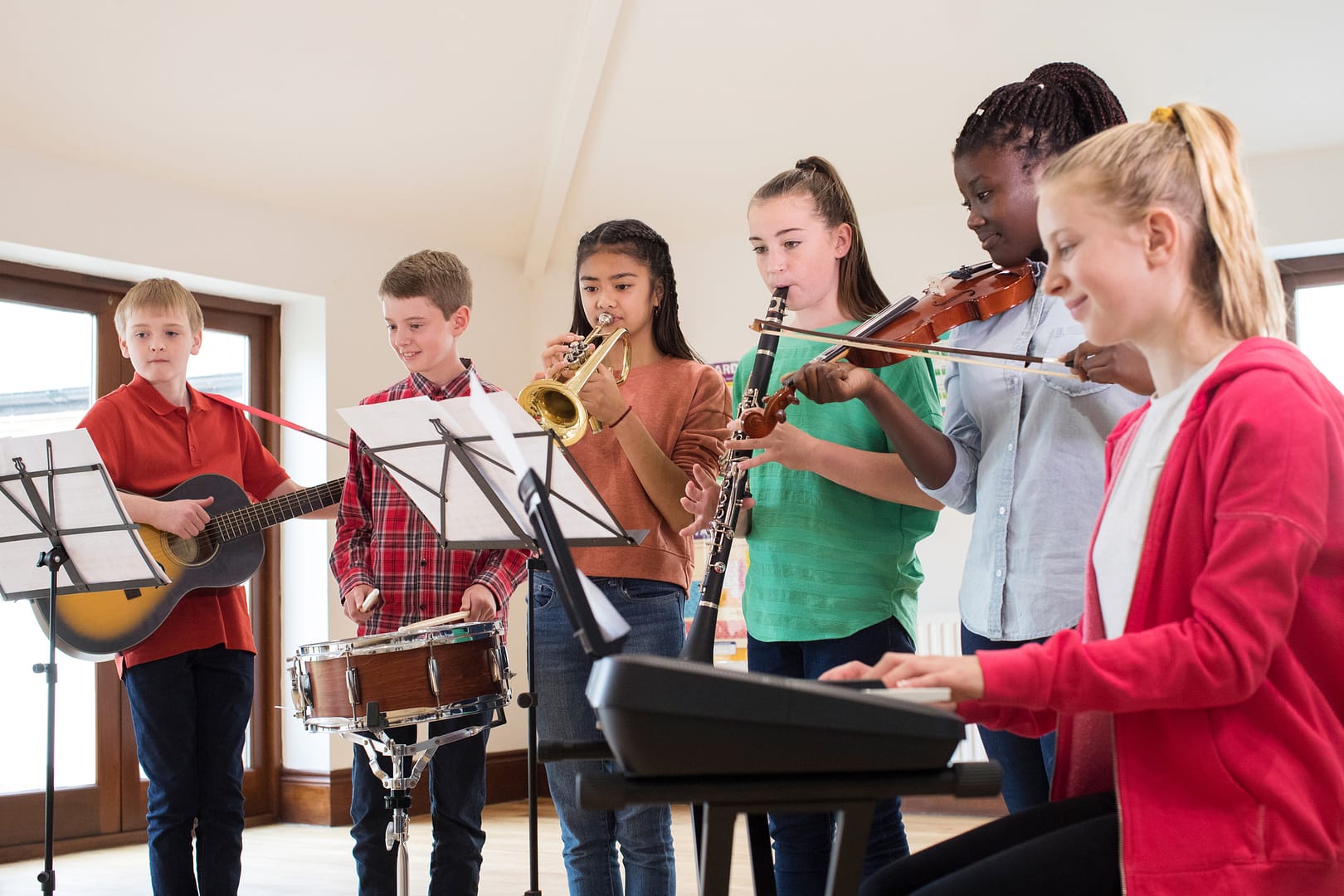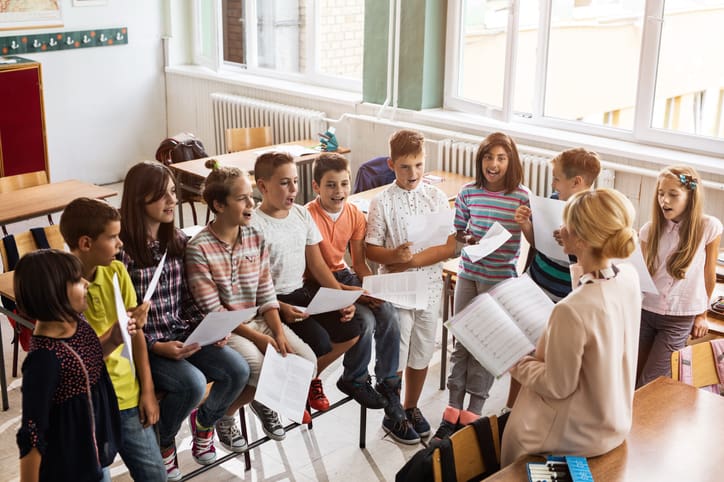Model Music Curriculum Planning
Written by Elizabeth Stafford
Published on 8th April 2022
Last Updated: 31st July 2024
Written by Elizabeth Stafford
Published on 8th April 2022
Last Updated: 31st July 2024

In March 2021, the DfE released a Model Music Curriculum (MMC). This non-statutory document represents one approach toward delivering the national curriculum for Music from key stage 1 to key stage 3. Although schools are not required to implement the MMC, and Ofsted have already stated that they do not necessarily expect to see it used in schools, we know there will be schools out there that want to follow the model. In this blog, we talk you through the process of creating a primary Music curriculum that satisfies the requirements of the MMC, using our experience of creating the key stage 2 instrumental scheme.
The MMC is split into various key areas. These are Singing, Composing, and Listening for key stage 1 and 2, plus Musicianship for key stage 1, and Performance for key stage 2. However, the document follows accepted pedagogy and research for music and states that these skills should be taught holistically rather than separately. This means a school’s first task is working out how to combine the different strands into holistic units of work.
The document’s appendix includes some case studies that claim to show you how to do this, but they may be best treated with caution as the majority lack one or more of the strands and so, do not represent a holistic approach! When creating our MMC-aligned materials for Kapow Primary, we based each unit around music from a different part of the world, including listening examples for the relevant musical styles (adding cultural capital), an original piece of music that the children learn to play and sing, and integrated improvising and composing activities, all delivered through a mixture of aural and notation-based learning. We chose this approach to make the curriculum more inclusive and accessible for pupils, and to ensure that we were not promoting a particular type of music over another. Considering the controversy surrounding the way that the MMC prioritises Western music over music from other parts of the world, by approaching it this way we have been able to not just meet but also exceed the requirements set out in the MMC.

If you are not a Kodaly-trained school, you will need to adapt the singing strand so that it does not focus so much on Kodaly methodology (created by Zoltan Kodaly in Hungary in the ‘30s and characterised by the use of ‘doh re mi’ and narrow ranges specified for each age group). This is the approach we took with our Kapow Primary MMC-aligned instrumental scheme, where the songs are designed primarily to be fun and engaging: promoting a love of singing, rather than pitch-matching or ear-training exercises. The songs sit within a wider range for some year groups than those prescribed in the MMC but are still comfortable for children to sing.
Another area where alterations may need to be made is the Composing strand. This deviates from most currently accepted pedagogy around the teaching of composing and improvising and instead focuses on the teaching of notation and musical theory. The composing activities suggested within the MMC are less concerned with developing children’s creativity, so if this is a priority for your school, you will need to follow your own methods with regard to composing. The Kapow Primary MMC materials revert to the more commonly held function of composing and improvising as opportunities to explore ‘how music works’ and are not primarily constructed for the purposes of writing music down. For example, pupils create vocal improvisation based on headlines, add melody to existing rhythms, and even have the opportunity to create ambient sounds for a film score.
All schools will need to do work around Listening to flesh out the information in the MMC, as it provides only a bank of suggested pieces to listen to. Our approach at Kapow Primary has been to look at research into how the skill of listening is developed and plan listening activities and repertoire to help facilitate this development. For example, we ask pupils to look out for key features in pieces that they listen to more than once, and we introduce new musical features in a progressive and logical way. We also approach the learning of the performance piece for each unit through a combination of aural learning and notation-based work; covering the other aspect of listening as ‘aural development’, which is listed as a requirement in the National Curriculum but not in the MMC.
The Performing strand of the MMC reads very much as if it has been written for classes learning orchestral instruments, with a focus on learning only a few new notes each year. If you are using more accessible instruments such as classroom percussion, you will find that you can exceed these expectations: once you can strike one note on a glockenspiel, you can strike them all! By using tuned percussion for our Kapow Primary key stage 2 instrumental scheme we were able to cover the performance strand for all of Years 3 and 4, and most of Year 5 within one year.
If your school is particularly keen to adopt the MMC, then the tips we have provided here should help you to develop a curriculum that is pedagogically secure while meeting, and in some cases exceeding, the requirements of the MMC. Alternatively, you can use our Kapow Primary KS2 instrumental scheme to obtain all these benefits but with a lot less work!